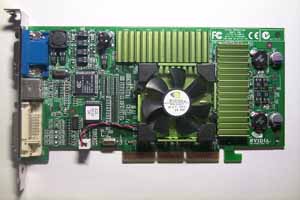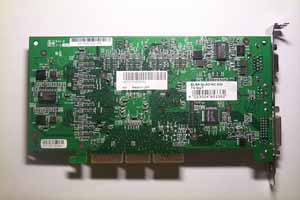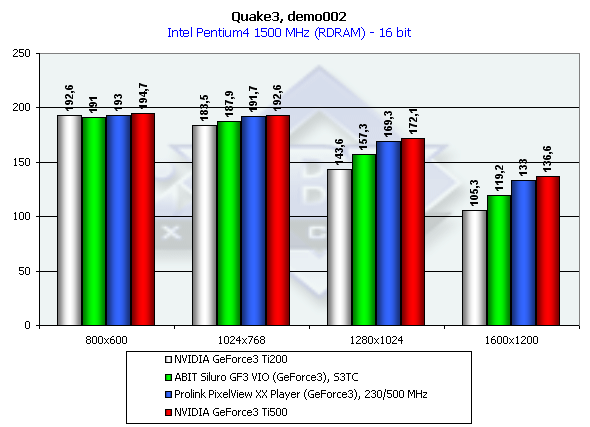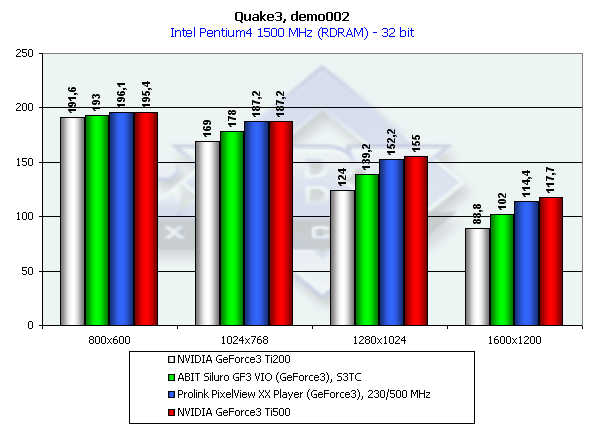 |
||
|
||
| ||
 Today GeForce3 cards have only 1.5% of real users. It is too little even for the High-End game class. Users are not keen on such expensive cards. Instead, they are looking for something cheaper with a decent performance. Many firms of the computer industry are eager for "quick" money and, therefore, establish unreasonably high prices. The demands, of course, fall down making sales and income almost unnoticeable. And if their price policy was more rational, new fast accelerators would easily reach end-users. But why they should do it if Riva TNT2 cards have 22% of admires (according to Valve)? This reproach concerns not only ATI (with its high prices for RADEONs at the beginning of sales) but also NVIDIA. The 3dfx Voodoo2, being the only such a powerful accelerator at the moment of its release, cost even less than the GeForce3 at the beginning of sales. There are not many who would agree to pay $400 and higher for a game accelerator even of a High-End level. The price range for all market sectors of $40-250 would be much more attractive. Video cards are not falling in prices so rapidly as, for example, memory. You all know that today the cheapest component in a computer is RAM. GeForce3 cards can sell at much lower prices, which would attract much more users. But such companies do not want to wait for a long time. That is why there are only 1.5% of their users. Fortunately, lessons are learnt. The new RADEON 8500 are said to be even less in price than the current GeForce3 cards. Moreover, the RADEON 8500 will be equipped with a dearer memory than the GeForce3. I'm sure that if the RADEON 8500 is a successful processor it will draw attention of much more users than the GeForce3. I also hope that such a competition in the High-End sector will help GeForce3 cards find more end-users. Prices for GeForce3 cards were to be reduced a long time ago, especially because they are getting more and more. Today we are going to study one of such cards with a good price/performance ratio. Before we turn to the card in question I should remind you that the whole theoretical base connected with this GPU is concentrated in the following articles (here you can also learn the peculiarities of certain cards and find out how they operate in the latest benchmark tests).
Prolink was one of the first Taiwanese companies to announce a top GeForce3 card. CardThe Prolink PixelView XX Player card has AGP x2/x4 interface, 64 MBytes DDR SDRAM located in 8 chips on the right side of the PCB. EliteMT produces memory chips with 3.8 ns access time, which corresponds to 260 (520) MHz. The card, however, operates at 230/250 (500) MHz which is a little lower than that of the GeForce3 Ti500. The memory modules are covered with heatsinks that is why it is impossible to look at them. This card is based on the reference card from NVIDIA (look at the photo below).   On the left you can see the Prolink PixelView XX Player, and on the right is the reference NVIDIA GeForce3 (represented by the ELSA Gladiac 920). You see that Prolink doesn't deviate from the reference design. The only difference is in a PCB color (it is yellow) and in the design of the GPU cooler. Above all, the card is equipped with a TV-out and a DVI. The card ships in a Retail package which includes:
OverclockingThe Prolink PixelView XX Player is not able to lift its frequencies considerably - it has reached only 240/270(540) MHz. That is why it makes no sense to speed up this card more than 230/250 (500) MHz. Note:
Installation and driversTest system:
During the tests we used NVIDIA drivers of v21.85, VSync was off, the S3TC technology was enabled. For the comparative analyses we used the following cards:
Test resultsLet's start with 2D. As it was already much spoken about, see the MSI GeForce3 card (VIVO) review for the detailed information. The Prolink PixelView XX Player performs quite well here. For estimation of 3D quality we used the id Software Quake3 v.1.17 – a game test which demonstrates operation of a card in OpenGL with a standard demo benchmark demo002. Quake3 Arenademo002, standard modesThe tests were carried out in two modes: Fast (16-bit color) and High Quality (32-bit color).   The test shows that the Prolink PixelView XX Player has the potential of the GeForce3 Ti500. It was expected since the card works at the increased frequencies. In closing, I'd like to advise you to read also other reviews of GeForce3 based video cards. Besides, in our 3Digest you can find thorough information on the 3D performance of GeForce3 cards on different platforms. ConclusionThe Prolink PixelView XX Player appeared a long time ago in the West, while in the Eastern Europe it is just entering the market. The price is expected quite low (less than $300 for the beginning of October). However, I'd like the manufacturers cut their prices more rapidly until the RADEON 8500 and GeForce3 Ti200/500 card appear. The complete characteristics of video cards of this and other classes can be found in our 3Digest. Highs:
Lows:
Write a comment below. No registration needed!
|
Platform · Video · Multimedia · Mobile · Other || About us & Privacy policy · Twitter · Facebook Copyright © Byrds Research & Publishing, Ltd., 1997–2011. All rights reserved. |